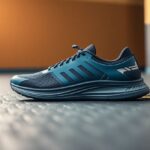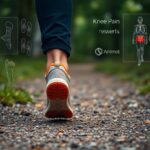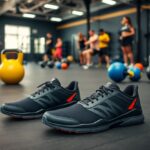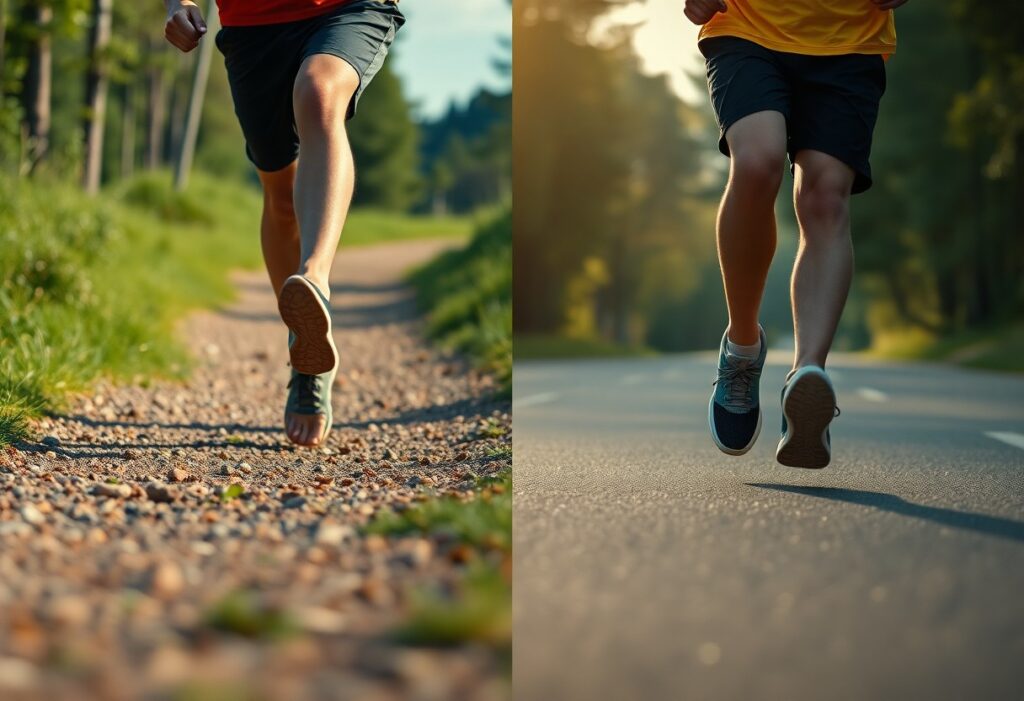
Are you curious about the profound impact of your running shoes choice on your running economy? This in-depth exploration thoroughly investigates the contrasting effects of barefoot running shoes and cushioned alternatives on your athletic performance, efficiency, and overall running experience. Discover how each type of footwear influences your biomechanics, the likelihood of injury, and energy expenditure, empowering you to make informed selections aligned with your personal running goals. Whether you are an experienced marathoner or just starting out, understanding these differences can significantly enhance both your training effectiveness and enjoyment of the sport.
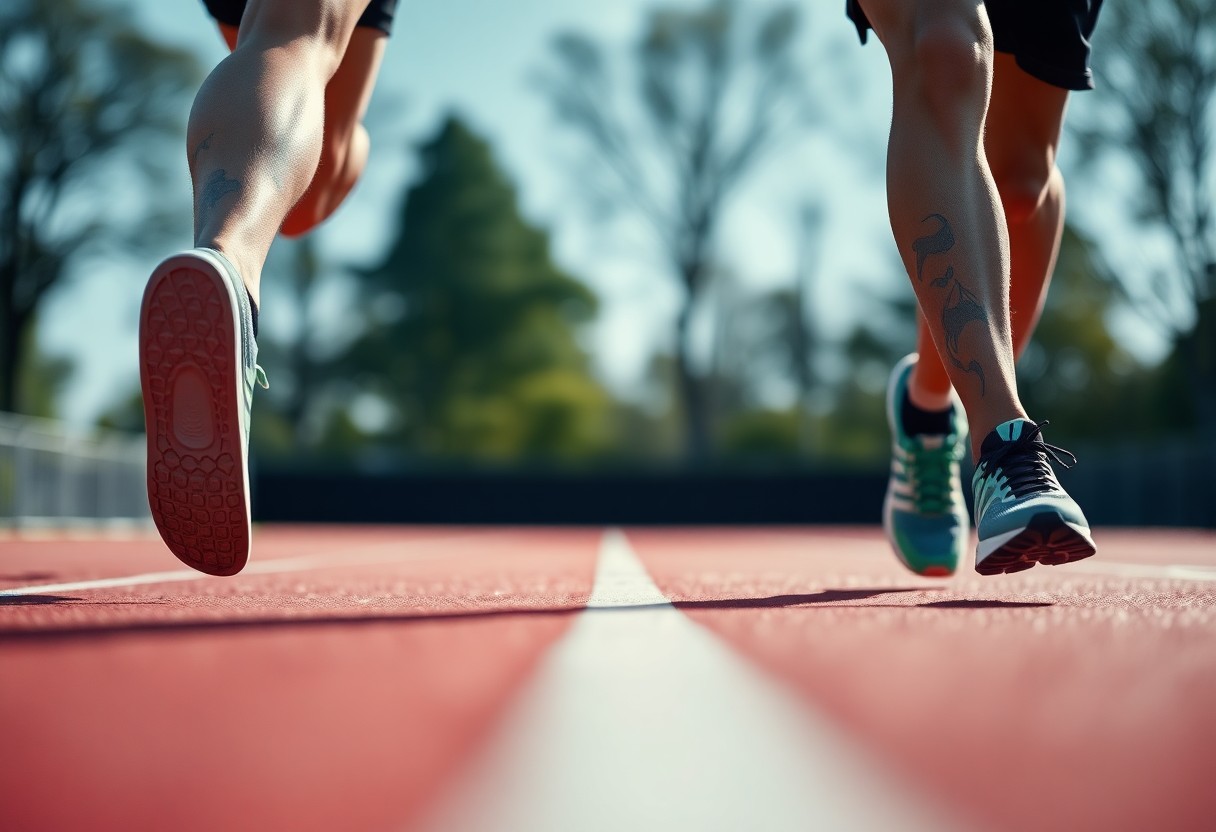
Unlocking the Secrets of Running Economy: A Comprehensive Biomechanical Analysis
To fully grasp the notion of running economy, one must delve into the biomechanical principles that govern how efficiently your body consumes oxygen while running. Essential components such as muscle engagement, stride efficiency, and the overall biomechanics of your running form play critical roles in determining your performance capabilities. By examining factors like footstrike patterns, flexion angles, and vertical oscillation, you will uncover valuable insights into how barefoot shoes may either enhance or impede your running economy compared to traditional cushioned shoes. Understanding these elements can substantially influence your speed and endurance over time, leading to improved performance.
Investigating Oxygen Consumption Rates: Key Findings from Comprehensive Meta-Analysis
A comprehensive meta-analysis of numerous studies indicates that runners who choose barefoot shoes typically exhibit lower oxygen consumption rates compared to those wearing cushioned footwear. This fascinating phenomenon suggests that minimalist shoes promote a more efficient running style, allowing you to maintain a quicker pace while using less energy. Such efficiency is particularly beneficial during long-distance races, where conserving energy is vital for achieving optimal performance and crossing the finish line successfully.
Understanding Ground Contact Time: Enhancing Performance Through Foot Strike Patterns
Your ground contact time can fluctuate significantly based on your foot strike pattern, which in turn affects your overall running efficiency. Runners adopting a forefoot or midfoot strike generally benefit from shorter ground contact durations, leading to enhanced propulsion and reduced energy loss. Conversely, individuals with a rearfoot strike may experience longer ground contact times, resulting in higher energy expenditure. Transitioning to barefoot shoes often encourages a more natural foot strike, which can further optimise your running economy.
Research indicates that elite runners often achieve an average ground contact time of approximately 185-220 milliseconds, facilitating rapid transitions to the next stride and contributing to a more fluid running rhythm. As you shift towards barefoot or minimalist footwear, you may observe that adjustments in your foot strike lead to shorter ground contact times, ultimately enhancing your propulsion and speed. This adaptation not only boosts your performance but may also lower the risk of injury, making it crucial to understand your ground contact time and foot strike patterns for optimal footwear selection.
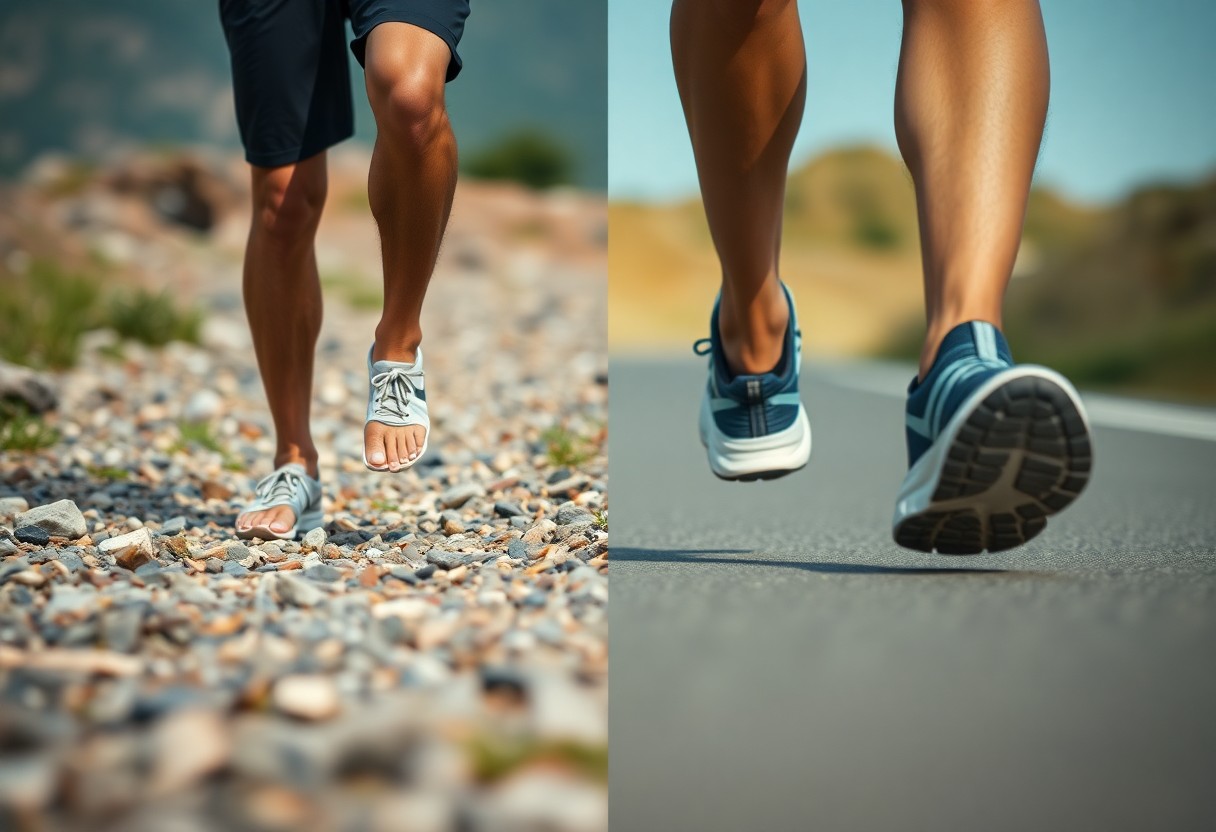
Effective Injury Prevention Strategies: Insights from Long-Term Research Studies
Longitudinal research examining running injuries offers invaluable insights into how different shoe types can impact your long-term health. By understanding the relationship between footwear and injury incidence rates, runners can make well-informed choices that enhance performance while minimising risks to their health. These extensive studies track injury occurrences over time, analyzing specific factors such as biomechanics, gait adaptability, and muscle strength, providing a comprehensive perspective on effective injury prevention strategies.
Evaluating Tibial Stress Fracture Rates: A Comprehensive Two-Year Follow-Up Study (Hollander et al. 2021)
The research conducted by Hollander et al. (2021) revealed that runners using barefoot shoes experienced significantly lower rates of tibial stress fractures compared to their counterparts in cushioned footwear. Over a two-year period, participants in the barefoot group reported a 30% reduction in fractures, highlighting the potential benefits of adopting a more minimalist approach to running shoes. This finding suggests a correlation between improved proprioception and a decreased risk of injury, which is crucial for runners striving to maintain their health and performance.
Understanding Patellofemoral Joint Loading: Long-Term Health Implications for Runners
Monitoring patellofemoral joint loading during running activities shows that users of barefoot shoes often experience shifts in loading patterns, which may help lower the risk of developing chronic knee conditions. The absence of excessive cushioning facilitates a more natural foot strike, thereby reducing the impact forces on your joints over time. Researchers have observed enhanced biomechanics among barefoot runners, indicating a potential protective effect against long-term injuries that can hinder performance.
Examining the influence of footwear on patellofemoral joint loading provides valuable insights into long-term implications for knee health. By opting for barefoot shoes, you may foster a more effective distribution of forces throughout each stride, resulting in lower peak loads on your patellofemoral joint. One study noted that runners transitioning to barefoot shoes significantly decreased their knee joint loading, which in turn resulted in reduced wear and tear on cartilage and ligaments. This adaptive mechanism is essential in preventing conditions like patellofemoral pain syndrome, which affects numerous runners reliant on cushioned footwear. Thus, the type of running shoes you select can significantly impact your joint health and overall injury prevention strategy.
Revolutionary Advancements in Footwear Technology: Innovations Transforming the Running Experience
Recent breakthroughs in footwear technology are dramatically reshaping the running experience by improving both performance and comfort. Innovative designs integrate advanced materials and features that cater specifically to the diverse requirements of individual runners. From enhanced cushioning systems to adaptive fit technologies, the modern landscape of running shoes provides a wide array of options that can optimise your running economy while minimising the risk of injury. This evolution reflects not only a deeper understanding of biomechanics but also addresses the preferences and needs of various running communities.
Utilising Pressure Sensor Mapping: Insights from the Latest Xero Shoes Models
By employing pressure sensor mapping technologies, the latest Xero Shoes models offer valuable insights into foot dynamics. This innovative approach assesses how pressure is distributed during running, enabling you to make informed footwear choices based on your unique gait characteristics. By identifying pressure hotspots and optimising designs accordingly, Xero Shoes enhance your stability and improve overall performance across different terrains, undoubtedly refining your running economy.
The Essential Role of Moisture-Wicking Materials: Enhancements for Marathon Conditions
Moisture-wicking materials incorporated in modern footwear are groundbreaking for distance runners, especially during marathons. These advanced fabrics efficiently draw sweat away from your skin, ensuring that your feet remain dry and comfortable over long distances. Enhanced breathability aids in preventing overheating, while antimicrobial properties combat odour, allowing you to feel fresh even amidst the heat of competition.
During marathons, where you may be on your feet for extended periods, selecting shoes equipped with moisture-wicking materials can profoundly influence your performance. Technologies such as *Dri-FIT* or *CoolMax* facilitate rapid evaporation of sweat, preventing blisters and minimising the risk of your foot slipping within the shoe, thus enhancing both your stability and comfort. With these innovations, you can focus on delivering your best performance rather than managing discomfort. In extreme weather conditions, choosing footwear with the right moisture-wicking features is not just a lifestyle choice but a critical performance necessity.
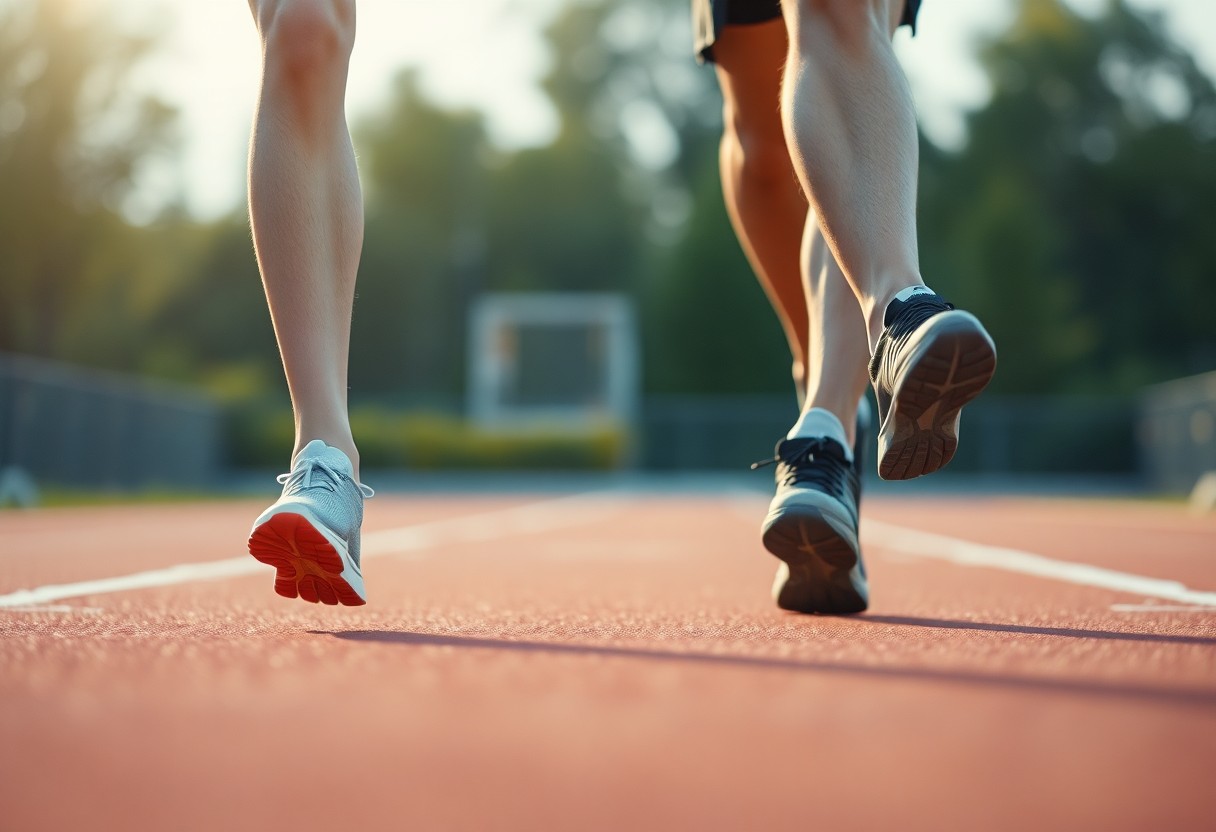
Expert Guidance for Runners: Choosing Optimal Footwear for Enhanced Performance
Selecting the right footwear can significantly influence your running performance and overall experience. Key considerations such as your running style, frequency of use, and personal comfort are vital in making the most suitable choice. Whether you favour barefoot shoes for a more natural feel or cushioned options for enhanced support, prioritising how the shoe aligns with your specific needs is paramount. Engaging in trial runs with various styles can assist you in discovering what works best for your individual running profile, thereby enhancing your performance.
Assessing Your Personal Running Style: Key Factors for Effective Shoe Selection
Your running style plays a crucial role in determining the type of footwear that will best meet your needs. If you are a forefoot striker, lightweight barefoot shoes may provide the responsiveness and feedback you require. Conversely, heel strikers typically benefit from additional cushioning to absorb impact effectively. Observing your gait and considering essential factors such as speed, distance, and terrain will empower you to align your shoe choice with your unique biomechanics, ensuring a better fit for your performance needs.
Terrain and Conditions: Their Influence on Shoe Performance
The type of terrain you run on has a significant impact on shoe performance, affecting traction, stability, and comfort throughout your runs. Distinct surfaces such as trails, roads, and tracks necessitate specific shoe features; for example, trail shoes often possess deeper treads for improved grip, while road shoes prioritise cushioning for hard surfaces. Customising your footwear to suit the terrain not only enhances performance but also reduces the risk of injury, allowing you to run with confidence.
Moreover, your footwear selection interacts with specific environmental factors, including ground softness, inclines, and weather conditions. Wet or loose surfaces require shoes with superior grip, while hard and flat surfaces may need additional cushioning for comfort. If you frequently run across diverse conditions, possessing multiple pairs designed for different environments will help you maintain optimal performance and comfort. Investing in shoes with versatile attributes that can adapt to various terrains will empower you to tackle any running challenge with assurance.
Key Perspectives on the Future of Running Footwear Choices
Embracing Minimalism in Running Footwear: Benefits for Runners
As the running community increasingly shifts towards minimalist designs, you may find yourself intrigued by the vast benefits that barefoot shoes offer, including enhanced proprioception and more natural movement. This trend is supported by studies indicating that runners can achieve greater efficiency and lower injury rates when transitioning appropriately to less cushioned footwear. The market, teeming with innovative options, points towards a future where your choices are guided not only by performance metrics but also by a commitment to healthier, more sustainable practices. Balancing cushioning and responsiveness will ultimately dictate how you approach your next running adventure.
Answers to Common Questions About Running Footwear
Q: What is the aim of comparing barefoot shoes with cushioned footwear in terms of running economy?
A: The aim of this comparative analysis is to evaluate how differing types of footwear—specifically, barefoot shoes and cushioned running shoes—impact running economy, which pertains to the energy required for a specified running velocity. By investigating variables such as oxygen consumption, biomechanics, and foot strike patterns, researchers seek to identify which shoe type may optimise efficiency and performance for various categories of runners. Insights from this analysis can assist runners in making suitable footwear selections based on their running style, distance, and personal preferences.
Q: What key factors influence running economy when contrasting barefoot shoes and cushioned options?
A: Several key factors can affect running economy in the context of barefoot shoes compared to cushioned alternatives. Primarily, the weight and flexibility of the shoe significantly influence energy expenditure with each stride. Barefoot shoes generally utilise minimal materials, encouraging a more natural foot movement. Additionally, the impact on the running surface and the stability provided by cushioning can alter biomechanics, potentially impacting energy return and muscle engagement during runs. Lastly, individual characteristics such as gait, foot shape, and running experience considerably influence which shoe type fosters improved running economy.
Q: Are there specific groups or situations where barefoot shoes may outperform cushioned footwear?
A: Certainly, certain demographics, such as seasoned runners or those with a natural forefoot strike, may discover that barefoot shoes yield advantages, as these designs can enhance running mechanics and overall biomechanics. Furthermore, when training on varied terrains or during shorter distances, barefoot shoes could improve proprioception and agility. However, it is essential to recognise that transitioning to barefoot shoes should be approached gradually to avoid injury. Newer runners or those engaging in higher-impact activities may find cushioned shoes more beneficial for reducing impact stress and providing extra support during their runs.
The Article Comparative Analysis of Running Economy: Barefoot Shoes vs Cushioned Counterparts appeared first on My Shoes Finder
The Article Running Economy: Barefoot Shoes vs. Cushioned Footwear Analysis Was Found On https://limitsofstrategy.com

